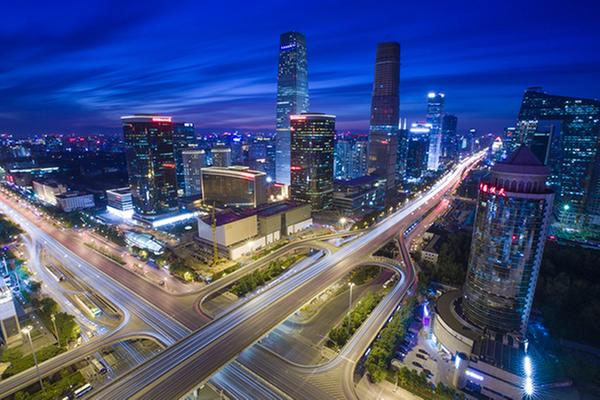China's economic challenges in 2019
By Stephen Roach | chinadaily.com.cn | Updated: 2019-01-23 14:50

Over the past 40 years, challenge has been synonymous with opportunity for the Chinese economy. With the economy slowing down, this remains the case in 2019.
Modern China has a rich experience to draw on as it contemplates its current risks. In the late 1970s, China faced enormous challenges in the aftermath of two decades of political, social, and economic instability — challenges that ultimately provided historic opportunities for the reforms and opening-up that were to follow. In the late 1990s, China faced the challenges of the Asian financial crisis, which subsequently turned into a pivotal opportunity for China to emerge as a leader of pan-regional economic growth.
And, of course, during the 2007-09 period, China faced the twin challenges of a global financial crisis and worldwide recession. While these developments came as a shock to most, for China they proved to be an opportunity to draw on a structural rebalancing strategy that was already under active consideration. Indeed, ahead of that crisis there was growing recognition by the Chinese leadership of the need to shift the sources of economic support from the seemingly systemic risks of excess reliance on external demand in a crisis-prone world to a new self-sufficiency from internal demand, especially private consumption. The 12th and 13th Five-Year Plans framed a new round of reforms that were most effective in addressing the strategic challenges of a decade ago.
The key to China's successful reform strategy was bridging the gap between rhetoric and implementation. From the rural reforms of the 1980s that sparked growth in entrepreneurial-driven Township and Village Enterprises to the first round of State-Owned Enterprise reforms of the late 1990s to the sharp tariff reductions ahead of China's accession to the World Trade Organization in late 2001, the reform agenda became China's greatest strength in implementing its longer-term development strategies.
The biggest question for 2019 is whether China, now facing increasingly stiff headwinds, continues to draw on reforms in meeting its challenges head-on. On the surface, there is good reason for concern. While the official data point to only a relatively modest slowdown in real economic activity in the final quarter of 2018, the deceleration in GDP growth was concentrated in tertiary activity. In conjunction with negative December comparisons for several key components of discretionary consumption (i.e., retail sales of autos and mobile phones), the relatively rapid compression of services activity, in the face of a more resilient manufacturing sector, hints at the emergence of a worrisome imbalance between aggregate supply and demand.
Two sets of forces appear to be at work— the structural headwinds of deleveraging after 10 years of increasingly debt-intensive growth and the cyclical pressures of yet another softening of the global economy, exacerbated by a worrisome conflict with China's largest trading partner, the United States. While the lagged impacts of a recent policy stimulus should kick in and stabilize the economy by midyear, downside pressures could intensify in the months immediately ahead.
To be sure, the broad consensus of Western observers believes that the Chinese economy will be much weaker — hit by this tough combination of cyclical and structural headwinds. Growth is projected to fall well short of the 6.6 percent pace of 2018, which, in and of itself, already represents a sharp slowdown from the 10 percent average gains from 1980 to 2012. While these concerns can hardly be dismissed out of hand, they have a striking sense of déjà vu. Time and again – but especially in the depths of the Asian Financial crisis of the late 1990s and again in the midst of the Global Financial Crisis a decade later — there was a crescendo of despair claiming that China would be next to fall. And yet, time and again, China has defied this pessimistic prognosis.
Will that be the case again? Surely, there is good reason to take current concerns seriously. Could it already be too late for China to avoid a Japanese-style debt crisis? As cyclical pressures on the real economy intensify, Chinese policymakers may well be tempted to push for debt-fueled growth. This would be a serious mistake. China's overall debt-to-GDP ratio is more than 100 percentage points higher today than it was during the global recession of 2008-09 — having moved up from 138 percent in late 2008 to 253 percent in mid-2018, according to BIS statistics. The leeway to act is far more limited as a result.
Moreover, many of last round of major reforms — the so-called Third Plenum Reforms of November 2013 — have not been implemented yet.
The optimistic case for China, which I continue to embrace, invariably requires a leap of faith when circumstances seem especially challenging. Such is the case in framing the outlook for 2019 and the years beyond. Like comparable circumstances in the past, reforms are the only way out. That is not only true of ongoing efforts at deleveraging required to avoid a Japanese-like endgame but also for more meaningful excess-capacity shedding, market-oriented SOE reforms. It is also true of China's need to push ahead on market opening reforms by eliminating foreign ownership caps (and joint ventures) in order to improve China's competitive climate and ameliorate the mounting conflict with the United States. China without reforms points to an opportunity squandered rather than to a challenge that begets a new opportunity. With the outlook darkening, China has no choice but to seize this moment.
The author is a faculty member of Yale University, was formerly chairman of Morgan Stanley Asia, the firm's chief economist, and author of Unbalanced: The Codependency of America and China (Yale University Press, 2014)
The opinions expressed here are those of the writer and do not represent the views of China Daily and China Daily website.
























